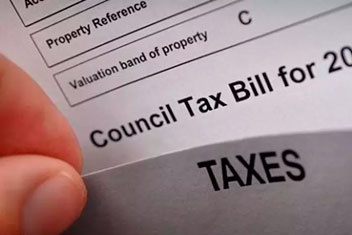
Houses of Multiple Occupation: The Regulations that Time (and many Local Councils) are forgetting
Since its inception in 1992 many regulations have been passed governing the billing and collection of council tax.
If one had to pick a set of council tax regulations which councils have forgotten – or shutting their eyes to them acting like they don’t exist – the Council Tax (Liability of Owners) Regulations 1992 SI 551 are the most important.
Dating from the creation of council tax, they were well known upwards of twenty years ago knowledge of them has dwindled to the point they are being routinely circumvented or omitted in determining the liabilities for multi-occupation dwellings for billing purposes.
These are regulations are made to cover situations where the owner of a dwelling rather than the resident or residents living in it liable for the council tax on the whole property. Examples include:
* residential homes;
* certain hostels providing care and support;
* some second homes with live-in employees and domestic servants;
* religious communities;
* houses with shared occupancy where residents live under one roof but do not form part of one house hold
Up until 2016 the category last in this list – falling under Class C in these regulations – were routine applied to Houses of Multiple Occupation.
In such a case the owner and landlord would be the deemed the liable person to pay a single bill for the whole house.
As defined Class C ‘houses of multiple occupation’ were dwellings ‘originally constructed or subsequently adapted for occupation’ involving former separate units and rooms adapted for occupation by persons not forming part of the same household and are otherwise unrelated. This is expressed as situations where the inhabitants ‘do not constitute a single household and each is a tenant or a licensee who can only occupy part of the dwelling or where he or she was liable to pay a licence or fee in respect of the whole dwelling’.
Parliament left it at that and the regulations came in on 1st April 1993.
This was a simple practical and fiscal expedient. It was recognised that these categories involved shifting patterns of occupancy and complicating collective living arrangements.
This was how the scheme of the 1992 Act operated. Having one liable person per property meant simplifying payment arrangements and reducing billing burdens and duties, both for local authorities and landlords as well as ensuring some payment from every dwelling and avoiding burdensome enquiries.
Otherwise billing authorities would be faced with continually checking arrangements and re-issuing new bills upon every change in occupier (e.g. with hostel accommodation) and to protect against the problems of certain categories of resident who might lack the means to pay or who might quickly move out leaving no forwarding address.
These regulations were certainly well known twenty years ago, periodically appearing in cases e.g. Hayes v Humberside Valuation Tribunal and Kingston upon Hull City Council [1998] RA 37 and expanded upon in Baker (Listing Officer) v Gomperts [2006] All ER 1(D).
Here the High Court maintained the correct test for determining if a building had been constructed or adapted for use as accommodation was an objective ‘bricks and mortar’ one, looking at the physical reality of what had been constructed and/or how it had been adapted.
In a number of cases landlords unsuccessfully challenged the imposition of liability e.g. Norris and Norris v Birmingham City Council [2000] RVR 89 and Soor v Redbridge LBC [2013] Admn 13.
Yet since 2016 the application of these regulations seems to be becoming increasingly rare and in an accumulating number of instances they are being overlooked. More puzzling still, all knowledge of them even denied, both by Billing Authorities and Valuation Office Agency officials.
Over the years there have been a lot of revision of regulations but it is rare for any measure to disappear entirely. As at the beginning of 2022 these regulations are still operative. With these regulations there has been no ‘extinction level event’ statutory change to wipe them out.
Nonetheless they appear to be being (selectively) forgotten, both by Councils and VOA officers when it comes to the billing and listing certain HMO dwellings.
The result is inconsistency in their application between authority areas. In turn this is leads to a growing number Valuation Tribunal appeals concerning HMOs and public disquiet and concern, where landlords and tenants of existing HMOs are suddenly finding the bedrooms summarily re-banded as individual chargeable dwellings.
If you are encountering problems and you think a single bill should be paid (not multiple ones) you should remind the Valuation Office and particularly the relevant Council responsible for the bills to remind them of their existence, Parliament would hardly have enacted them just to be ignored.
